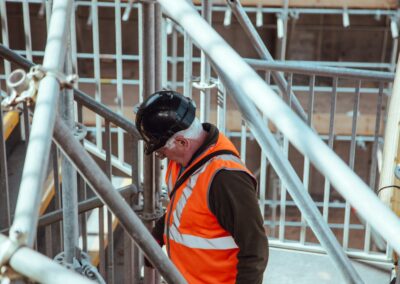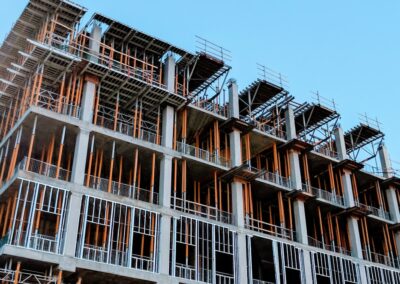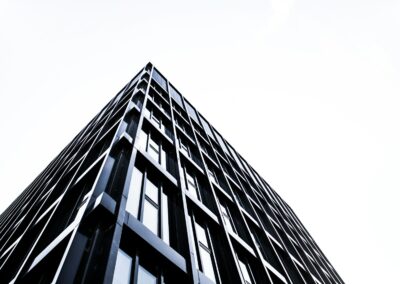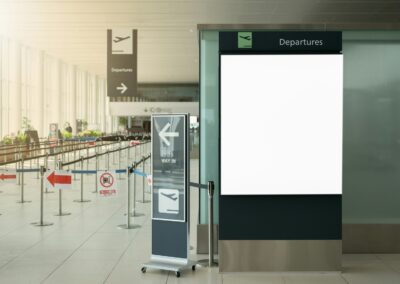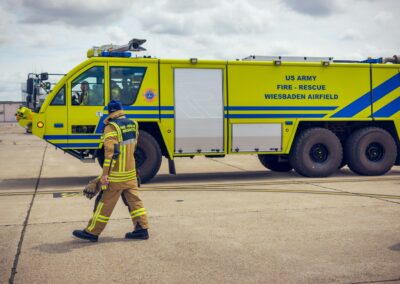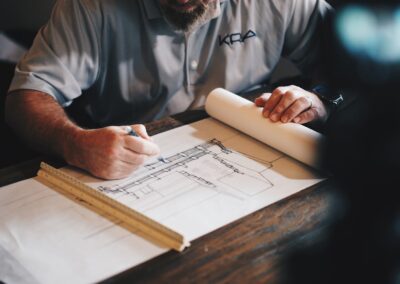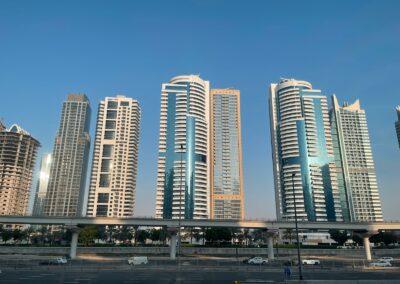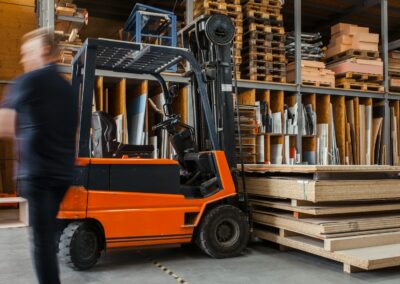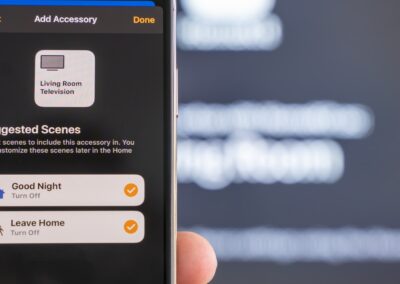Leveraging Advanced Technologies for Safer Buildings
Introduction to BIM and Digital Twins in Construction
BIM and digital twins for building safety are revolutionizing the construction industry by providing comprehensive tools for simulating potential hazards and enhancing the resilience of buildings. Building Information Modeling (BIM) integrates multi-dimensional models with data, enabling detailed visualization and management throughout a building’s lifecycle. When combined with digital twins, these technologies offer a dynamic and real-time representation of physical assets, facilitating proactive management and risk mitigation.
In rapidly developing regions like Saudi Arabia and the UAE, where cities such as Riyadh and Dubai are experiencing significant construction growth, the adoption of BIM and digital twins is crucial for ensuring the safety and resilience of buildings. These technologies allow for the simulation of various scenarios, helping to identify potential risks and implement effective mitigation strategies. As a result, construction projects can achieve higher standards of safety and operational efficiency.
Moreover, the integration of artificial intelligence (AI) and other advanced technologies enhances the capabilities of BIM and digital twins. AI algorithms can analyze vast amounts of data to predict potential hazards, optimize resource allocation, and support decision-making processes. This synergy of technologies not only improves building safety but also contributes to sustainable and resilient urban development.
Benefits of Using BIM and Digital Twins for Building Safety
The utilization of BIM and digital twins for building safety offers numerous benefits, including improved risk management, enhanced resilience, and optimized resource utilization. Traditional methods of building design and construction often rely on static models and periodic inspections, which can miss potential hazards. BIM and digital twins, however, provide a dynamic and continuous approach to safety management.
One of the significant advantages of these technologies is their ability to simulate various scenarios and assess potential risks. By creating a virtual replica of the building, digital twins can model different hazard conditions, such as earthquakes, floods, and fires. This capability allows construction managers and engineers to identify vulnerabilities and implement effective mitigation measures before any real-world events occur.
Additionally, BIM and digital twins support the optimization of resource allocation and utilization. By analyzing real-time data, these technologies enable construction managers to make informed decisions regarding material usage, labor deployment, and equipment management. This optimization not only enhances project timelines and reduces costs but also contributes to environmental sustainability by minimizing waste and resource consumption.
Implementing BIM and Digital Twins in Construction Projects
The implementation of BIM and digital twins for building safety involves several critical steps, including data collection, model creation, and integration with existing construction management systems. The process begins with the development of a detailed BIM model, incorporating architectural, structural, and MEP (mechanical, electrical, and plumbing) data. This model serves as the foundation for the digital twin.
Artificial intelligence plays a pivotal role in processing and analyzing the data collected from various sources, including sensors and IoT devices installed in the building. Machine learning algorithms are used to create and maintain the digital twin, continuously updating the model to reflect the current state of the building. This real-time representation enables continuous monitoring and proactive management of building safety.
Successful implementation also requires collaboration among architects, engineers, construction managers, and IT professionals. Training and support are essential to ensure that all stakeholders understand how to use and interpret the BIM and digital twin models effectively. Additionally, regulatory compliance and data privacy considerations must be addressed to protect sensitive information and ensure ethical use of the technology.
Strategic Advantages for Construction Management
Enhancing Resilience through Hazard Simulation
The integration of BIM and digital twins for building safety significantly enhances the resilience of buildings by enabling the simulation of potential hazards and risks. By providing a detailed and dynamic view of the building, these technologies allow for the modeling of various scenarios, such as natural disasters and structural failures.
BIM and digital twins facilitate continuous monitoring and analysis of building data, enabling early detection of potential issues. For instance, sensors can monitor structural integrity, temperature fluctuations, and humidity levels in real time. By identifying anomalies and trends, construction managers can take preventive measures to address potential risks before they escalate into serious problems.
Moreover, BIM and digital twins support the development of contingency plans and emergency response strategies. By simulating different hazard scenarios, construction managers can assess the effectiveness of various mitigation measures and optimize their response plans. This proactive approach enhances the overall resilience of buildings, ensuring that they can withstand and recover from adverse events more effectively.
Optimizing Resource Utilization and Efficiency
The use of BIM and digital twins for building safety also optimizes resource utilization and efficiency in construction projects. By providing a comprehensive and integrated view of the building, these technologies enable construction managers to make informed decisions regarding material usage, labor deployment, and equipment management.
BIM and digital twins allow for the real-time tracking and management of construction resources, ensuring that materials are used efficiently and waste is minimized. For example, digital twins can monitor the inventory levels of construction materials and predict future demand based on project timelines. This capability helps construction managers avoid overstocking or understocking, reducing costs and enhancing project efficiency.
Additionally, these technologies support the optimization of labor deployment and equipment management. By analyzing real-time data on workforce performance and equipment utilization, construction managers can ensure that resources are allocated effectively, avoiding idle time and maximizing productivity. This optimization not only enhances project timelines but also contributes to environmental sustainability by reducing energy consumption and emissions.
Driving Innovation in Construction Management
The adoption of BIM and digital twins for building safety drives innovation and advancements in the construction industry. By leveraging AI and other advanced technologies, these tools provide new opportunities for research and development in building safety, efficiency, and sustainability.
Construction managers and engineers can use BIM and digital twins to explore new strategies for enhancing building safety and resilience. For instance, they can model the impact of various construction materials and design configurations on the building’s performance under different hazard conditions. This capability allows for the testing of innovative solutions and the identification of potential risks before implementation.
Moreover, BIM and digital twins contribute to the advancement of smart construction technologies by providing a comprehensive and integrated view of construction operations. This holistic approach enables more effective decision-making and supports the development of intelligent construction management systems. As a result, construction projects can achieve greater efficiency, sustainability, and safety.
Conclusion
In conclusion, the integration of BIM and digital twins into construction management represents a transformative shift in the construction industry. By enabling real-time monitoring, hazard simulation, and performance optimization, these technologies enhance the safety and resilience of buildings. As technology continues to evolve, BIM and digital twins will play an increasingly important role in shaping the future of construction management, leading to safer, more efficient, and sustainable construction projects.
—
#BIM #DigitalTwins #BuildingSafety #HazardSimulation #ConstructionTechnology #AIinConstruction #SaudiArabia #UAE #Riyadh #Dubai #ModernTechnology #ExecutiveCoaching #ProjectManagement #BusinessSuccess


